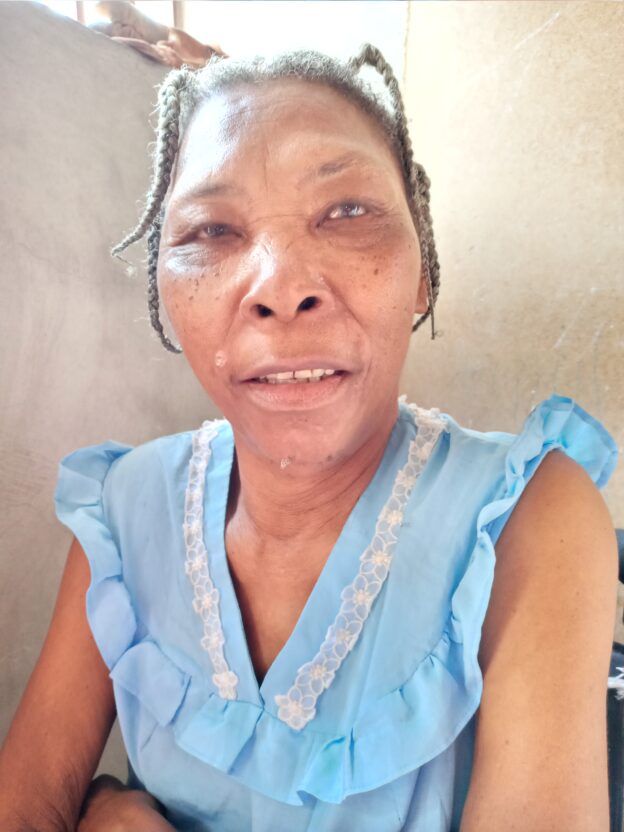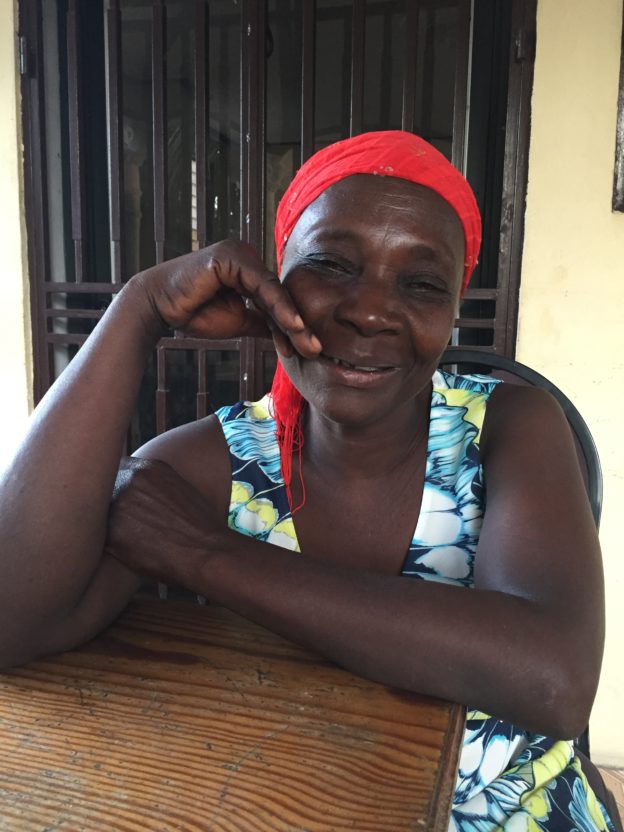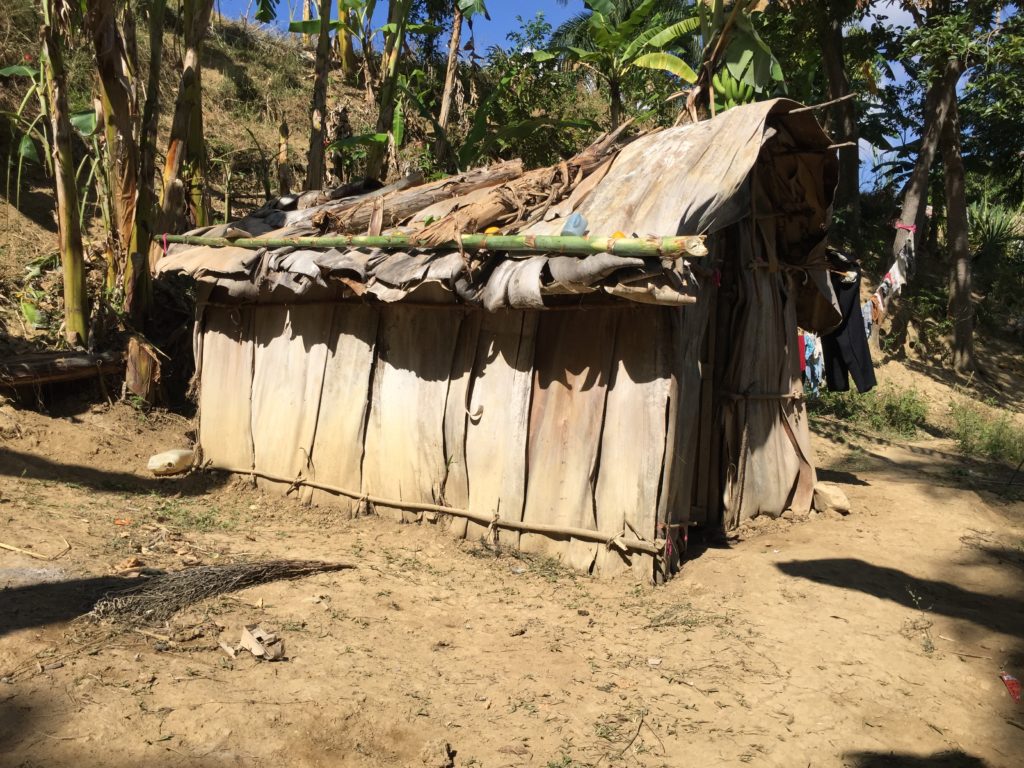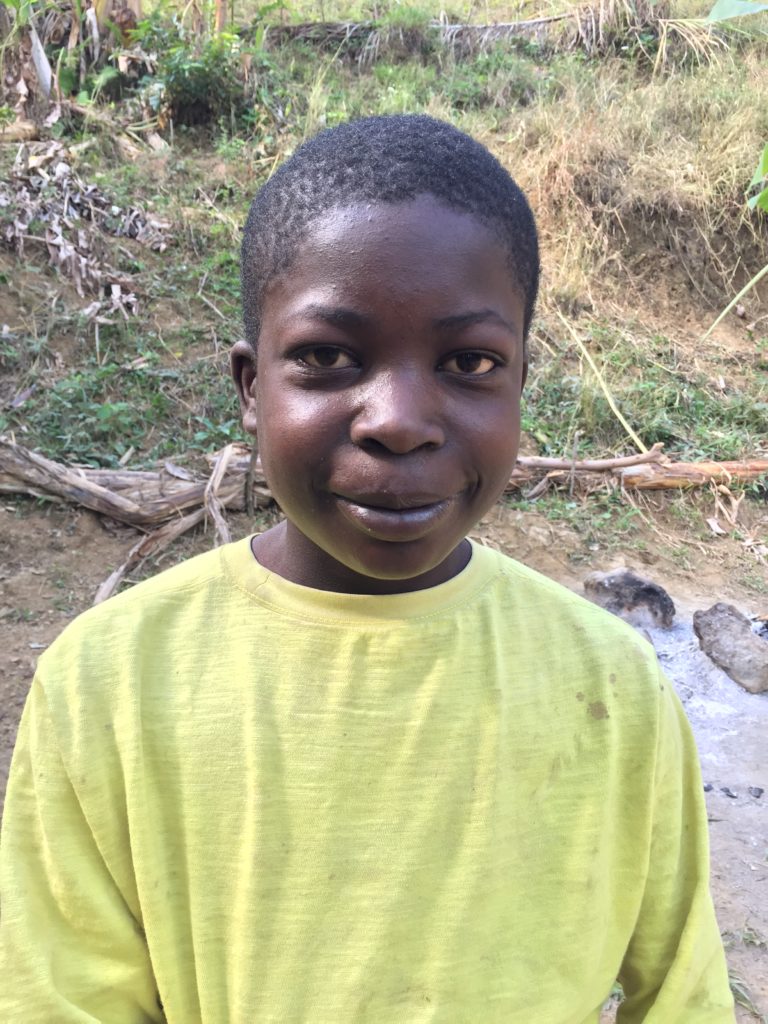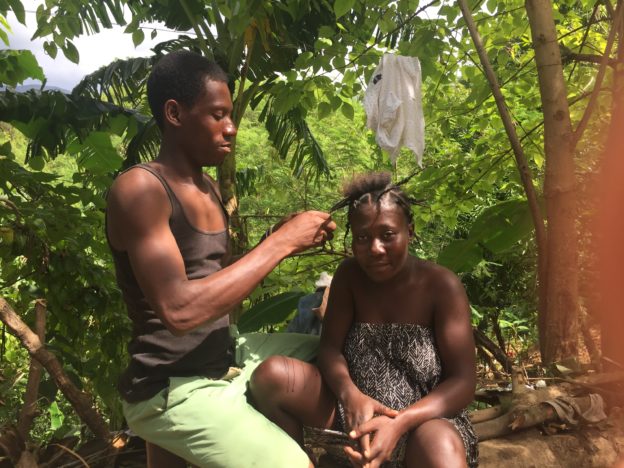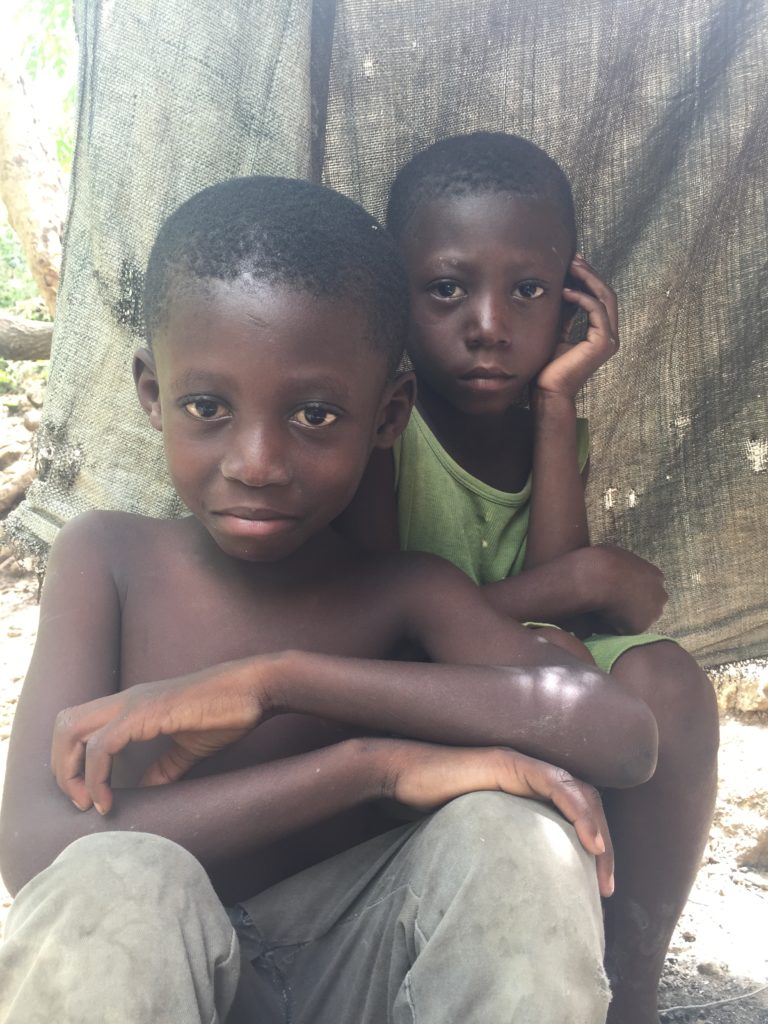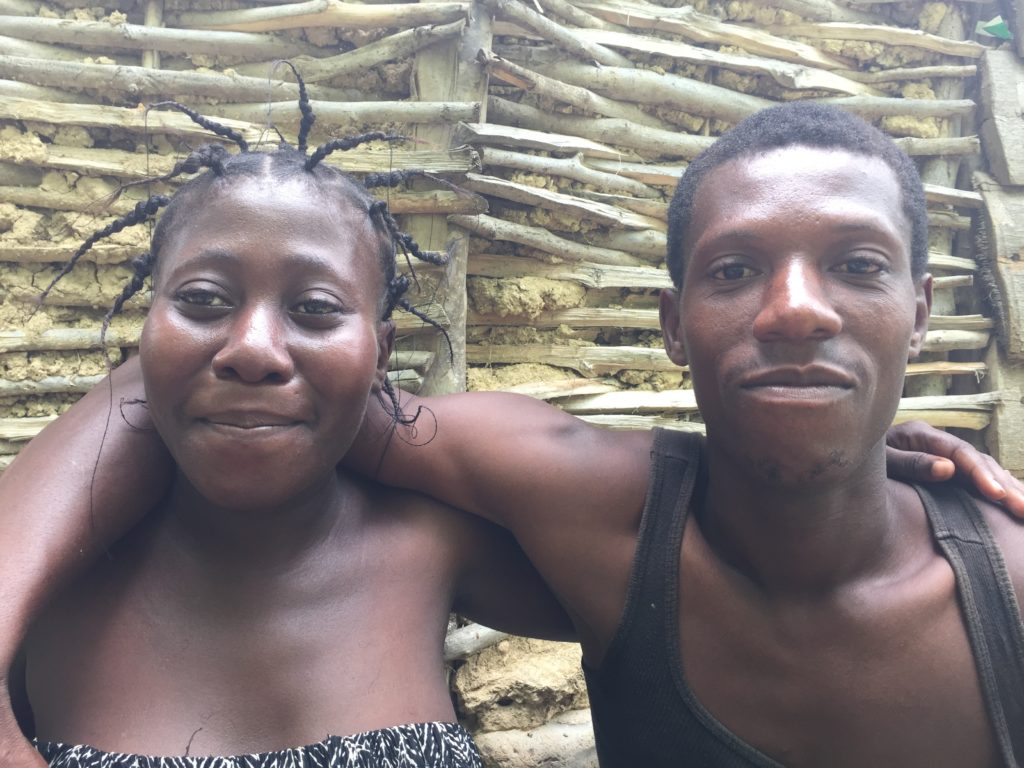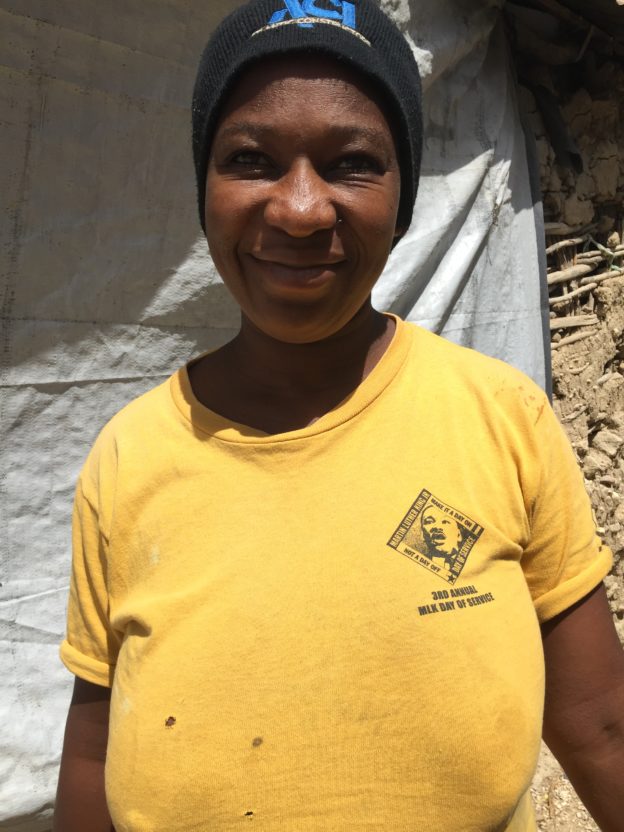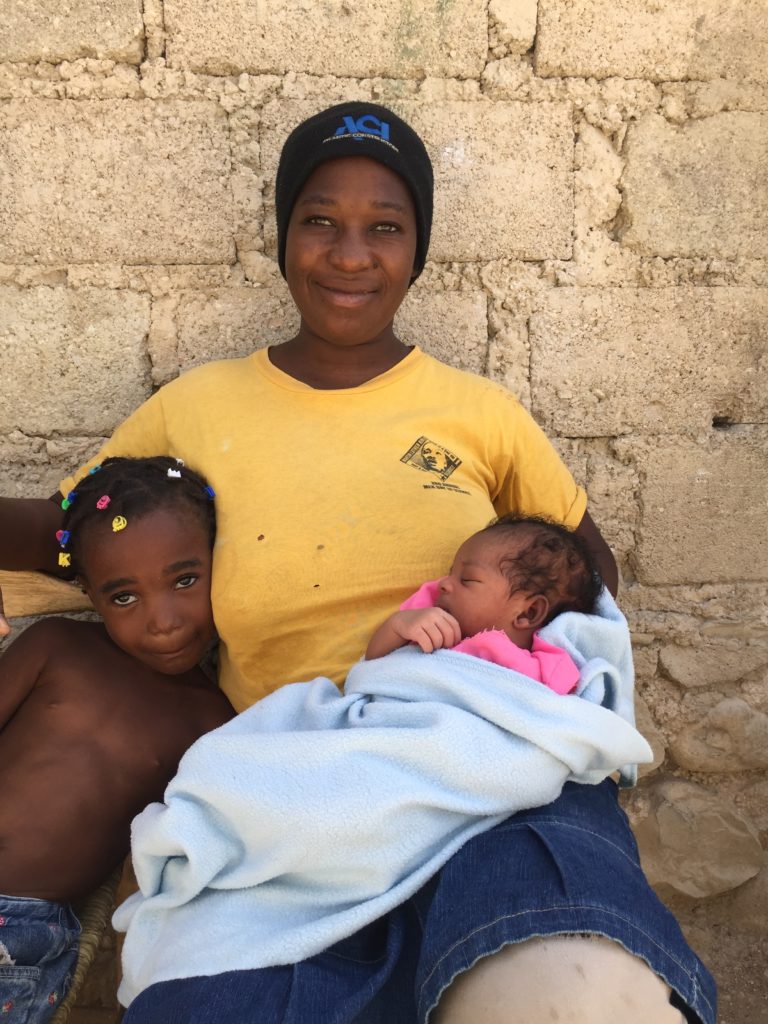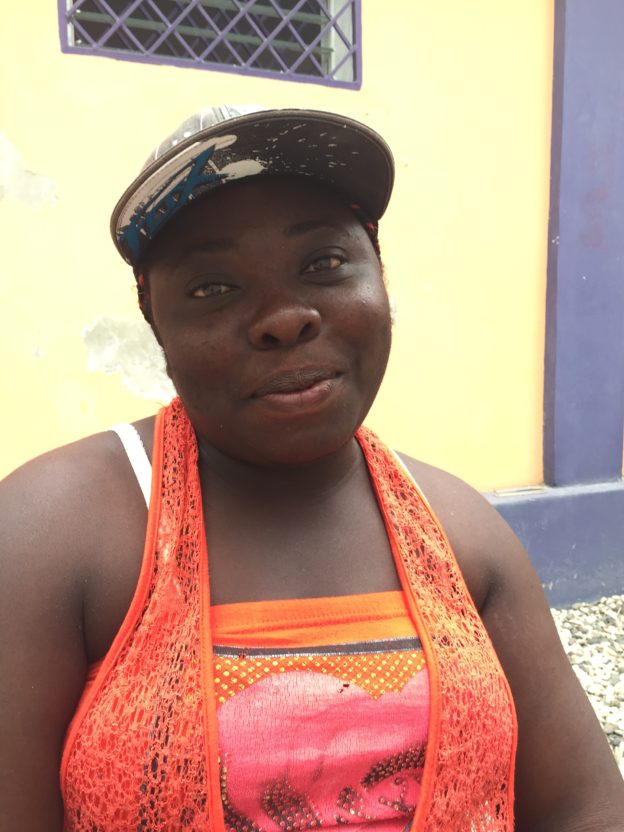Carmelle is in her mid-60s. She has had some trouble using at least one of her feet for as long as she can remember, but in the last dozen years the problem has grown much worse. After a stroke, she was left unable to stand without great difficulty, and though she once made her living serving prepared meals at the market in Ti Fon, which is just a few meters from her front door, she lost enough of the use of her hands that it became dangerous for her to work near a fire. She came to depend on charity from family members, neighbors, and friends.
She was part of the pilot that Fonkoze undertook with the office of Haiti’s Secretary of State for the Integration of Persons with Disabilities, which concluded in 2016. By the end of the program’s eighteen months, she had made substantial progress. She and the boy who lived with her were eating 1-2 hot meals every day, and she had her own livestock: chickens, goats, and a cow.
None of that, however, is what she points to as the most important changes the program helped her make. “Nothing the program did was unimportant,” she says. But she quickly lists the three things that helped her most: the latrine, the savings lockbox, and the wheelchair.
She cites the latrine first, and she talks about it most, sharing embarrassing incidents she experienced before she had one. The difficulty she has moving her body around meant daily humiliation as long as she needed to find someplace in a field to defecate.
Before she received the CLM lockbox, she had never saved. The lockboxes were a unique feature of CLM pilot for persons was with disabilities. It was a way to encourage savings for folks whose mobility might be quite limited. The program’s participants each received a lockbox, but their case manager kept the key until the program’s end. Each week, he would open the box and give the member the chance to put some savings in.
Participants also receiving training in savings that was based on an approach created by Dawn Elliott, a professor at Texas Christian University, which provided most of the funding for the pilot. Members received bonuses for hitting specific targets at twelve and then eighteen months. Carmelle hit both.
Carmelle became a motivated saver. Though her main source of income continued to be gifts, she learned not to spend everything she received. “I still like to save when I can. The grandkids sometimes ask me for money, and I like to give them a few gourds. They take it to buy lollipops.”
The wheelchair and the walker she received made an enormous difference. In the countryside, the walker was more useful. Though she could use the wheelchair within her own yard, their is no paving anywhere near her neighborhood, so it was the walker that enabled her to get up and around.
Her life changed dramatically three years ago, just a year after she completed the program. She moved from her own small house in Ti Fon to her daughter’s house in Bonrepo, a thickly populated area on the northernmost edge of the plain that stretches north from Pòtoprens.
The decision to move related to two changing circumstances. On one hand, her daughter, Guerda, really wanted he to come. “As long as my husband and I were renting a room, we didn’t feel we had space. But as soon as we finished our own house, we asked her to move in. We built it with a place for her in mind.”
On the other hand, life in Ti Fon was about to get harder. For years, she had depended on her friendship with Kervenson, her neighbor’s young boy. But he was ready for secondary school, so he would be moving to downtown Laskawobas. There were no secondary schools in Ti Fon. He’d still come home on the weekends, but wouldn’t be around the rest of the week.
Kervenson had been sleeping in Carmelle’s home with her for years. Rural Haitians are very reluctant to sleep alone in a house. But it was more than that. “Kervenson is not a relative. His family’s name is neither my mother’s nor my father’s. But now he’s more than family to me.” Get Carmelle onto the subject and she tells story after story of things that the boy would do for her, from simple chores like helping her take care of her livestock and preparing meals, to more difficult and intimate things, like helping her keep herself clean. She tells stories of instances where he undertook tasks that one associates with nurses and their aides, and the only thing that she says ever brought him to complain are the times when she hesitated to ask him for help.
Carmelle is happy to be with her daughter, son-in-law, and grandchildren, now, but she misses Kervenson and she misses her home. “We talk on the phone, and he comes to see me when he can.” She’d like the chance to visit Ti Fon, too, but she feels settled where she is.
And that’s true even though things have gotten more difficult for the family. Carmelle still has her cow. It is under a neighbor’s care. But she has no income where she now lives. Guerda and her husband both worked for a manufacturing company, he as a driver and she as part of the crew. But stable employment ended when the company moved its main facility to the DR. Guerda was let go, and her husband’s position turned from full-time employment to occasional odd jobs. So, the family is struggling.
